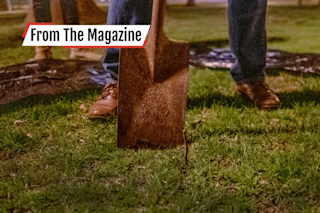At 9 a.m. in Rehoboth, Delaware, the windows of Dogfish Head Brewery, on the town's main drag, are steamed up. Mike Gerhart, a head distiller for Dogfish, has arrived early to stoke the kettles for today's historic brew. Joining him is his boss, Sam Calagione, Dogfish's founder. Down from Philadelphia for the day is Patrick McGovern, an archaeological chemist at the University of Pennsylvania Museum.
Adventures in brewing are not uncommon at Dogfish Head. In the 10 years since he started the brewery, Calagione, 36, and his crew have distinguished themselves in the brewing subculture for whimsy and imagination. They have made ales with beet sugar and raisins, with chicory and St. John's wort. Their Pangaea ale used ingredients from all seven continents. Five years ago, Calagione and McGovern collaborated on Midas Touch, a beverage informed by the 2,700-year-old remains of a funerary feast discovered in central Turkey and believed ...














